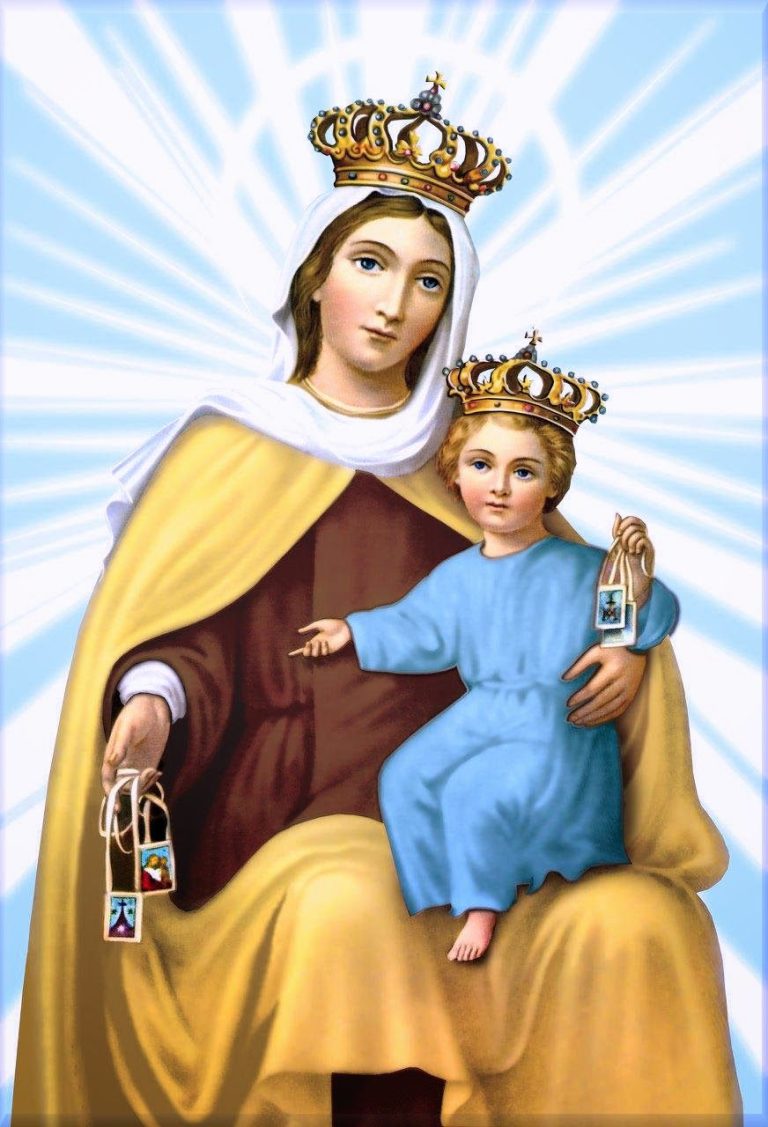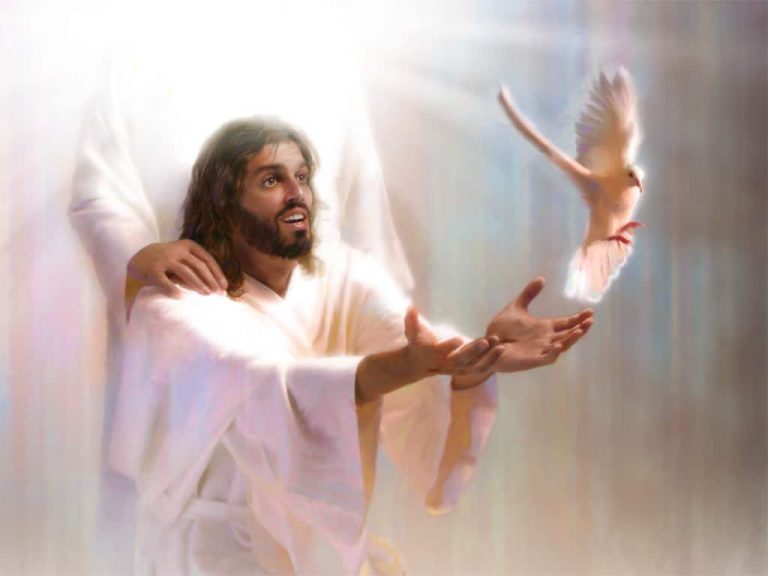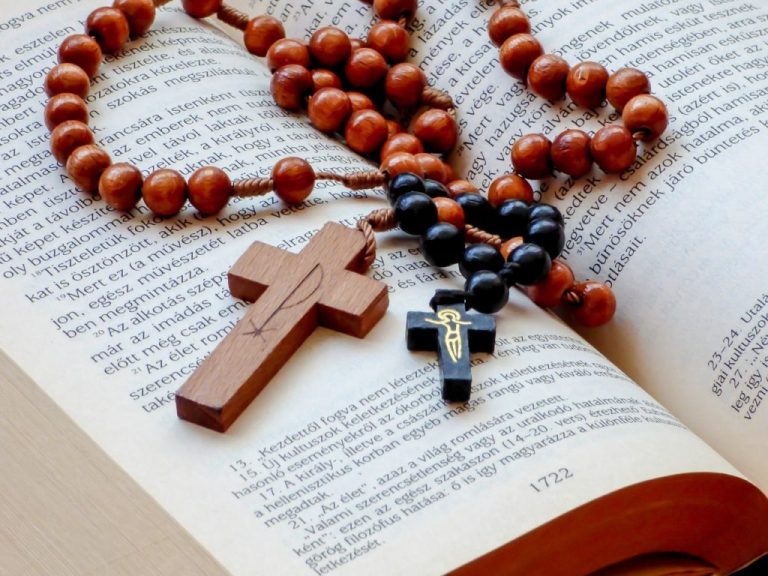History Of The Symbols Of Baptism And Its Signs
When we explore something as special as the sacraments of the Catholic Church, we can discover that there is much more hidden behind them, and no, by this we do not mean the spiritual, although this is certainly the most important part, but each sacrament has a reason. Regarding its elements and for this reason, we are going to deepen about these elements of the first of the sacraments that are received, know here the symbols of baptism.
The baptism
Baptism is the first sacrament, which is offered to each new human being who has come into the world so that the door to the Christian environment is opened, because when we are born, our soul is accompanied by the sin that has been inherited from generation to generation. in generation from our first parents Adam and Eve.
We are not yet part of the Church; then through this sacrament, water is the main symbol of baptism with which we obtain purification and begin to compose the mystical body of Christ that is made up of each one of the baptized.
It is the beginning of a path full of good things and thanks to Baptism, we have the admission and joy of receiving the other sacraments that strengthen our soul and unite us more and more to our Lord Jesus Christ. And being purified in this act of love and forgiveness that makes us understand how infinite his mercy is from our childhood, we practically become children of God.
The word Baptism derives from the Greek βάπτισμα, that is to say báptisma, which means “immersion”, which is the immersion of our being in the purifying water. The water symbolizes a purification channel for various ancient religions. In fact, in Judaism it was required that they be put into practice, the lavatories that purify and give permission to enter the cult.
Water is considered as the element that cleanses the body both externally and internally from all contamination and stains caused by sin. Over the years, these practices that had water as an essential resource, expanded and began to be applied in different communities and religions.
Purifications in rites and cleansing washes, are the beginning that would later give way to Baptism as we have it today, but since remote times that are located in the Old Testament, men knew the salvific power of water among the symbols of baptism, and how it works as a tool of God’s will for salvation than those who were righteous in heart. Let’s keep in mind the Universal Flood that led Noah to build the ark (Genesis 7) and the Red Sea that was crossed by Moses and the people of Israel (Exodus 14).
The idea of what we normally know as baptism becomes clearer when in the New Testament, we know John the Baptist for the way he instituted it, including, in addition to using water to purify, John managed to make those who received it , they will begin to form part of the descendants of Abraham. Likewise, John’s baptism was a sign of preparation and joyful expectation of the one who is about to come, of the Messiah.
In order to participate in this new Baptism that John offered, it was essential that people repent for all their sins and implore God’s forgiveness. And those who made that request had to be aware of the impact that this would have on their lives, because it was not just anything, it meant assuming the commitment not only to get rid of the old person, but to put on the new one and remain with that new dress until the end, with water being the pillar of the symbols of baptism.
Juan himself affirms that this is not the definitive Baptism but temporary, it is the opening for the Baptism that will bring the one who is powerful and to whom Juan is not even worthy to untie the strap of his sandal despite the fact that Juan arrived first (Juan 1; 27). He said: “A Baptism made with water waiting for that made with fire”; because the baptism that the messiah brought was not with water, but with the Spirit.
At that time when Jesus met John so that he could be baptized, it is a sign that the Messiah accepts with love the destiny that awaited him and the Bible says: Coming out of the water, Jesus sees the sky open and the Holy Spirit appears in the form of a dove, while from heaven a voice is heard: “You are my beloved son, my favorite.” (Matthew 3; 16).
The Holy Spirit rests on him so that Jesus becomes the Lamb of God, we see that then the Redeemer himself was born again and knowing the mission that the father had entrusted to him, he accepted it without protest, although it included a strong ending that it would not be forever because the Resurrection would come later.
This is how the future of a man and of human beings is obtained on the banks of the Jordan River, where before such a noble and humble act, history would change forever.
The meaning of Christian Baptism
It is important to note that Pentecost was the event that founded the foundations of the church and once the Holy Spirit rested on the Apostles, which occurs fifty days after the Resurrection of Jesus; Essential components of the Church begin to take shape and among them we have Baptism, since it is born from that moment.
Just like the Baptism of the Messiah in the Jordan River, it was the beginning of his ministry among men; Pentecost, would come representing the Baptism of fire of the Holy Spirit and the great mission that the apostles had at that time to make Jesus known and especially to baptize, all for the origin of our Christian Church.
By command of Jesus, from that event, Peter as head of the Church and the other disciples, began to preach and promote, the repentance of the orders for the forgiveness of their sins but that this had to go beyond words, it had to be demonstrated before God, receiving Baptism for the absolution of every fault and to be able to enjoy the Gift of the Holy Spirit.
Christian Baptism requires immersion in water or optionally receiving water on the head. Among the symbols of baptism; submerging in the water represents the death of Jesus, while the Resurrection emerges from it.
In the water, sin is eradicated and the body, which contains the affected spirit, is decontaminated. This symbolic act, which is followed by the imposition of hands by the bishop, priest or deacon who is celebrating the ritual, leads to the liberation from sin and the spreading of the Holy Spirit on the baptized.
At the end of the ceremony, the baptized person becomes one with Jesus in his death, resurrection and glorification. The old creature is no longer present, it was replaced by a new one, a Christian who has been cleansed of all evil and who is now expected to be a future active member of the Church, since in each of the aspects, he has been reborn of the water and the Spirit.
Although the person does not see an external change, the truth is that inside himself he has been reborn in a spiritual way; and this was the product of the Holy Spirit, who with the light of Christ, has saved us from that darkness that was in us so that we include ourselves in the people of God.
symbols
Baptism, as well as the other sacraments, must have utensils, songs, words, symbolic gestures and non-verbal signs that, together, make the celebration bright enough to make the sacrament a pleasant experience full of a harmonious environment where peace prevails. and the divine presence. Among the symbols of baptism that are most relevant to evaluate, we have:
- sign on the forehead
- liturgy of the word
- immersion water
- the chrism
- oil of catechumens
- candle light
- the white garment
-Signation on the forehead
The celebrant (bishop, priest, or deacon), after a brief address with the parents and godparents, attends to the baptized by making the sign of the cross on his forehead as a sign of a warm welcome to the house of God. Parents, godparents and those present must do the same.
-Liturgy of the word
One or several readings of the Holy Scriptures must be read, since the Word of God is the creator of life: In the beginning there was the Word… and the Word was God. Everything was done for her and without her, nothing was done that exists (Gospel according to Saint John Chapter 1).
-Intercessions
It is another of the symbols of baptism that is expressed verbally. The entire community prays for the one who is going to be baptized, for the intentions of those who are on the site and for all the intentions of the universal Church.
-Litany
Requests are made to the saints, those examples of Christian life that have lived in previous times, so that they intercede before God for the one they are going to baptize with the purpose of helping him on his way.
– The water
As previously pointed out, it has the primordial function of purifying the one being baptized, cleansing his body, his soul, his entire being from sin. Water is known worldwide as the indisputable sign of life. It is also that element that refreshes and feeds our land, so that it can bear fruit; water cleans efficiently and this can also be done with our soul so that it can recover the whiteness that resembles us to Christ.
The celebrant must first bless it. So that after renewing the baptismal promises where sin is renounced and faith is professed, the time comes to pray the Creed. To culminate, the celebrant asks the parents and godparents if they want the infant to be baptized and proceeds to pour water three times over his head, proclaiming the words: I baptize you in the name of the Father, of the Son and of the Holy Spirit.
– Chrism
It is another of the most important symbols of baptism and works to consecrate and give way to the access of the baptized to the great family of the Church. It is an oil with a pleasant aroma and that, in addition to being used in Baptism, also in Confirmation and when a man is ordained a priest (remember that the order to the priest is one of the optional sacraments of the confirmed). In Baptism it is used to place it on the head of the person being baptized, drawing a type of seal that consecrates him as an official member.
In Confirmation, the celebrant draws a cross on the forehead of the confirmand as a sign of the Holy Spirit that rests on him to grant him the strength that characterizes a warrior of Christ.
At ordination it is used to place it on the palms of new priests and the foreheads of bishops. However, this oil is not consecrated by the priests of each parish, but is the task of the bishop of the diocese, archdiocese or order, who consecrates it once a year during the Chrism Mass on Holy Thursday and then it is sent to each parish.
– Oil of the catechumens
It stands out on a symbolic level and even decrees the clothing of the baptizing as a warrior of faith, a knight of the royal court of Christ. It is no coincidence that in ancient times, oil was used by athletes to anoint their extremities before starting to train and by wrestlers as a strategy to avoid the grip of their opponent.
With the oil of the catechumens, the celebrant draws a cross on the chest and another on the shoulder blades of the baptized person, which will be his seal as one who has accepted to fight against temptations and will now be protected by the shield of faith against all sin.
Next in the symbols of baptism, we have the candle, which is given to the parents and godparents of the baptized, this represents the light of hope that is in the child, so that those around him, have love for him, and want to lend him your support, accompany him in his faith. And the church has a relevant role because it will serve as an instrument so that the one being baptized is that light of a world that is submerged in so much darkness.
Light is considered the first of God’s gifts when he made us part of his creation. In the Old Testament, light was seen as a sign of faith in the coming of Jesus, although with the passing of time, this light has taken on other meanings that should be representative for each believer.
“I am the true light”, Jesus commented to his disciples: “You are the light of the world… So let our light shine before men, so that they may see our good deeds and glorify our father who is in heaven” (Matthew 5; 16).
The candle, too, is the commitment of the Christian to discover the light that emanates from his own faith, to become the light with his work and throughout his passage through this earthly world.
– The white garment
It is granted during Baptism as a symbol of that new life that has been acquired, the purity that the person being baptized now has.
In ancient times, those who were preparing to receive baptism had to wear a white garment as one of the symbols of baptism that were required to join those who would be their new brothers in faith and in the Church.
This clothing, manifests the soul, in order to get an idea of the tone that the soul has now acquired with the celebration that has been carried out by the work and grace of the Holy Spirit, a total renewal that we can continually continue to have with the sacrament of the confession when we repent for our faults.
The Baptism of the Code of Canon Law
This code announces for Baptism and the use of holy water and the competent procedure.
Baptism for adults, or in this case, for children who are over seven years old, a time of catechumenate is necessary, which gives them the formation to face what they want with the sacrament.
Likewise, in order for Baptism to be granted, an adult must show that they are not doing it out of obligation but that it is sincerely a desire that they carry in their hearts; have received the proper education or catechism in the duties that correspond to him as a child of God; have had signs in his life during the time of the catechumenate that correspond to the Christian and that he has shown true repentance before his sins.
In the case of children, it is necessary that their parents give their consent and assume the commitment to contribute to the Christian formation of the child. In addition, the code determines that, in the event that there is a very high risk of death, the child may be baptized even if her parents object.
The Baptism must be administered by the parish priest of the Church to which the family belongs, but he can give permission for another person to do the baptism in an emergency case, ideally in the latter case it is a lay person.

Hello! Let me enthusiastically introduce myself as a dedicated blogger fueled by an intense passion for meticulously crafting insightful and well-researched blogs. My mission revolves around providing you, dear readers, with a veritable treasure trove of invaluable information.







